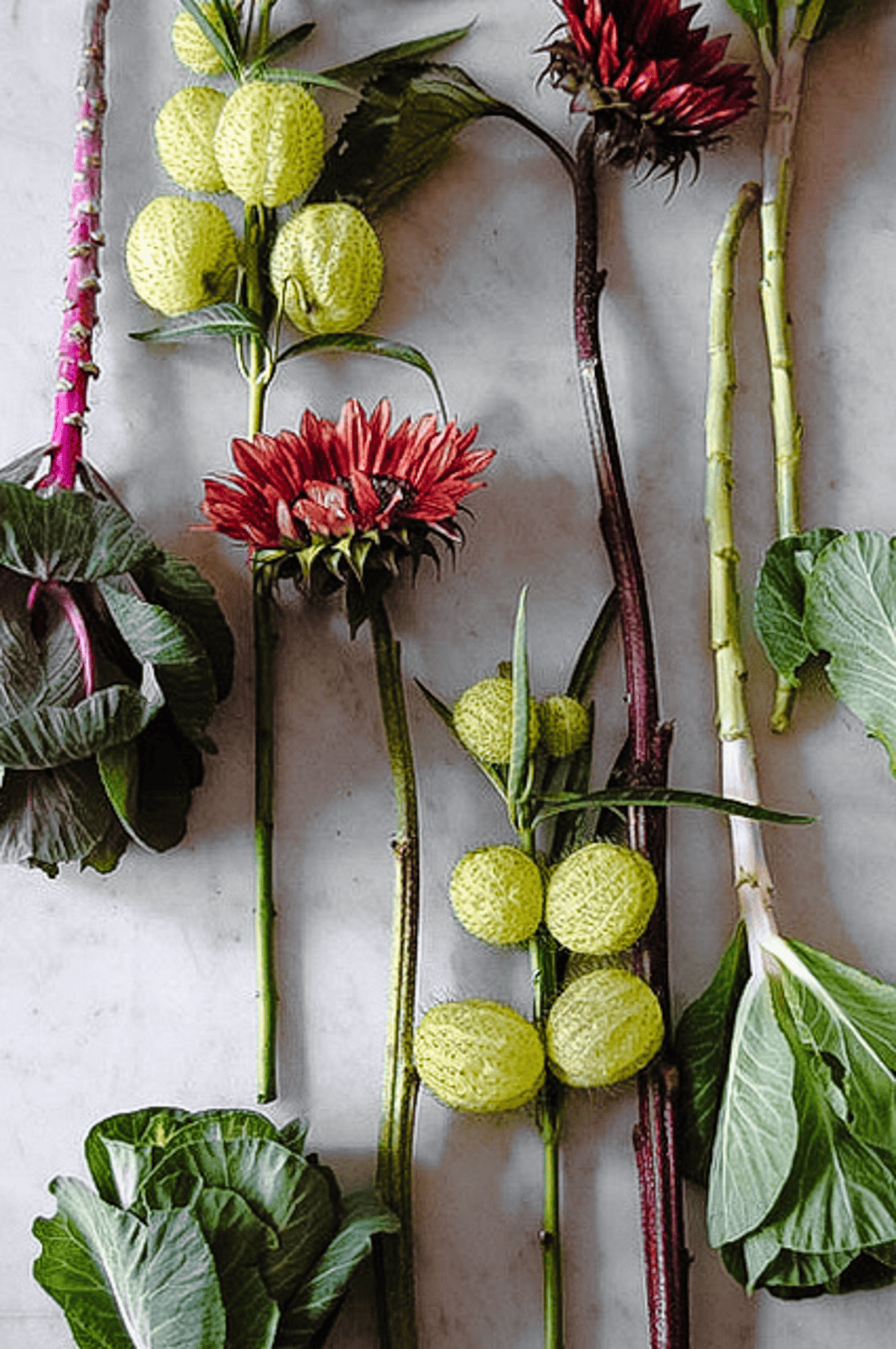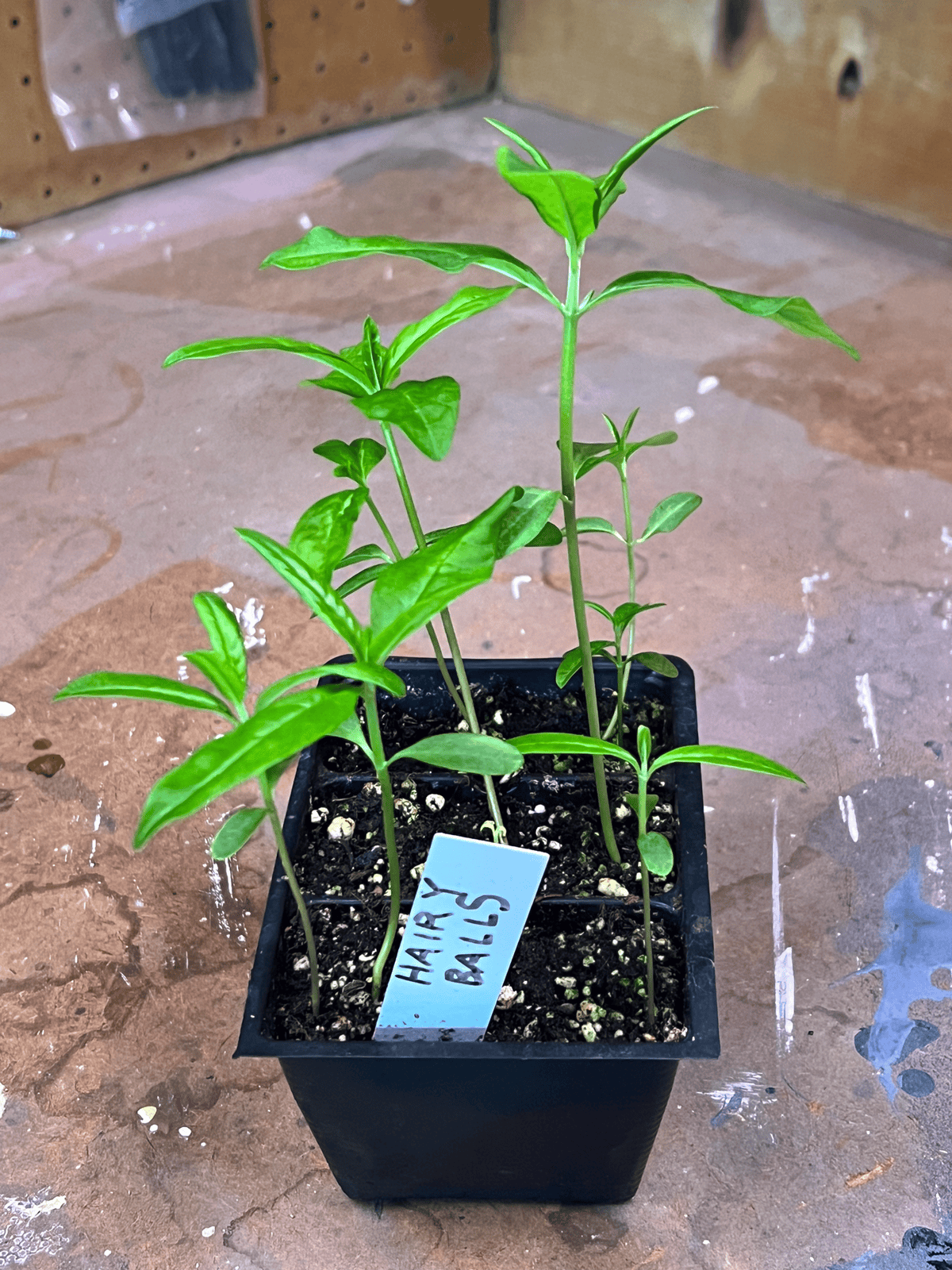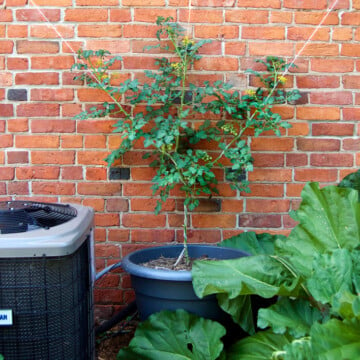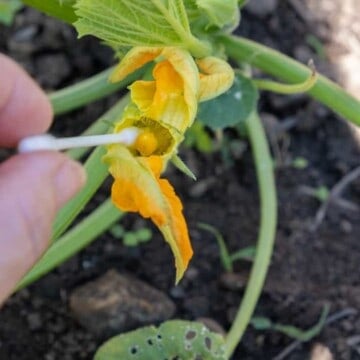More formally known as Green Hairy Balls, Gomphocarpus physocarpus, is a bit of a scraggly plant that produces large, green balloon-like seed pods on long stems.


Behold big hairy balls, the pièce de résistance of fall flower arrangements. Even better than it's bulbous, light green seed pods, I discovered last week that this plant is in the milkweed family; the monarch butterfly host plant.
Milkweed is what Monarchs eat and lay their eggs on. The last time I grew this plant I had no idea it was a milkweed. However, it is not a native milkweed and you shouldn't grow it for monarchs.
(Non native milkweeds change the migration pattern and increase OE disease in monarchs because the plants have a longer growing season. The plants are fully leafed out and looking delicious when the monarchs should be starting their migration. Instead, they hang around, snack, and get diseased. )
You can read more about that here in Monarch scientist Andy Davis' site.
NOTE: Andy (who has excellent credentials) believes home raising of monarchs is harming them far more than helping them.
I'm planting them for flower arranging.
I discovered these flowers at my farmer's market in the early 2000's. A booth run by a local flower farm had them in bouquets at the end of the season along with sunflowers and mini cabbage.
This in itself is a case for going to your own local farmers markets. I've yet to pass through a high end floral shop that offered me a handful of giant, hairy balls.

Hairy Balls Plant
Appearance
- Grows 5-6 high with long stems. Pinching out the top will create a bushier plant with shorter stems.
- Has delicate white flowers that hang off a single stem. These are followed by the "fruit" a green balloon type pod that holds the seeds.
- Pods are green to begin with and become more brown/amber when mature.
- Balloons are 3" across and covered in soft (not sharp) hairs.
Conditions
- Balloon plant is fond of full sun and well draining soil.
- Native to Africa, the plant tolerates drought well, but make sure when it's a seedling that it gets enough water.
- Perennial in zone 8 and above, grow as an annual otherwise. You can save seeds from the pods at the end of the season from dry pods.
Planting
- This plant needs 120-130 days to mature.
- Sow indoors 6-8 weeks before the last frost.
- Days to germination: 7-10 days. In Zone 6b I started my Hairy Balls on March 23rd, and they were all sprouted by April 2nd.
- Plant seeds ¼" deep.
- Plant out after danger of frost has passed. 🤞

Go ahead. Grow a pair.






I’m on to you. You found the seeds, spent money and weeks to pot and sprout them, wrote the post and shared with the world all so you could write that last line.
Kudos.
I commit to a joke like a lion commits to a kill. ~ karen!
So, are the hairy balls hard or soft?
Perfect last line! Zing!!
LOL--I'm getting the feeling that you wrote the entire blog post just so you could write the last line...
Great article, but I'm confused...
You said,
"...it is not a native milkweed and you shouldn't grow it for monarchs."
"...I'm planting them for flower arranging."
(This is funny! Did you tell the monarchs?)
"...Go ahead, grow a pair."
Andy Davis said,
"- Is this plant harmful to monarchs?
It is probably not good for the fall migration.
- Should you plant this milkweed in your backyard?
No."
I guess it all depends on where you live, so I shouldn't....and won't,
but why are you? Inquiring minds want to know.
Given your mention of Andy's position on the home raising of Monarchs, are you committed to continuing your yearly ritual?
Do you have a link to a specific article of his that discusses how it's more harmful than helpful? (I looked at his site, but couldn't find one.) Thanks!
I learn so much from you Karen. Thanks for the education. Hairy balls!!!! I have to find seeds.
The Learning Channel has nothing on this channel. That's what I tell my friends. Swear.
Ha! Ha! What a fun addition to a flower arrangement! No doubt there's a market for bawdy arrangements: nothing like flowers and a good laugh to make us feel better about practically anything. I'll look for this, Karen. Thanks!
Love it. Although, as a New Zealander, l can't help but think it looks like a Kiwi fruit with mange. 😊
That's actually exactly what it looks like, lol. ~ karen!
Ya' learn sumthin' new every day from the wonderful world of horticulture. Today hairy balls, tomorrow????? Who'd a thunk it?